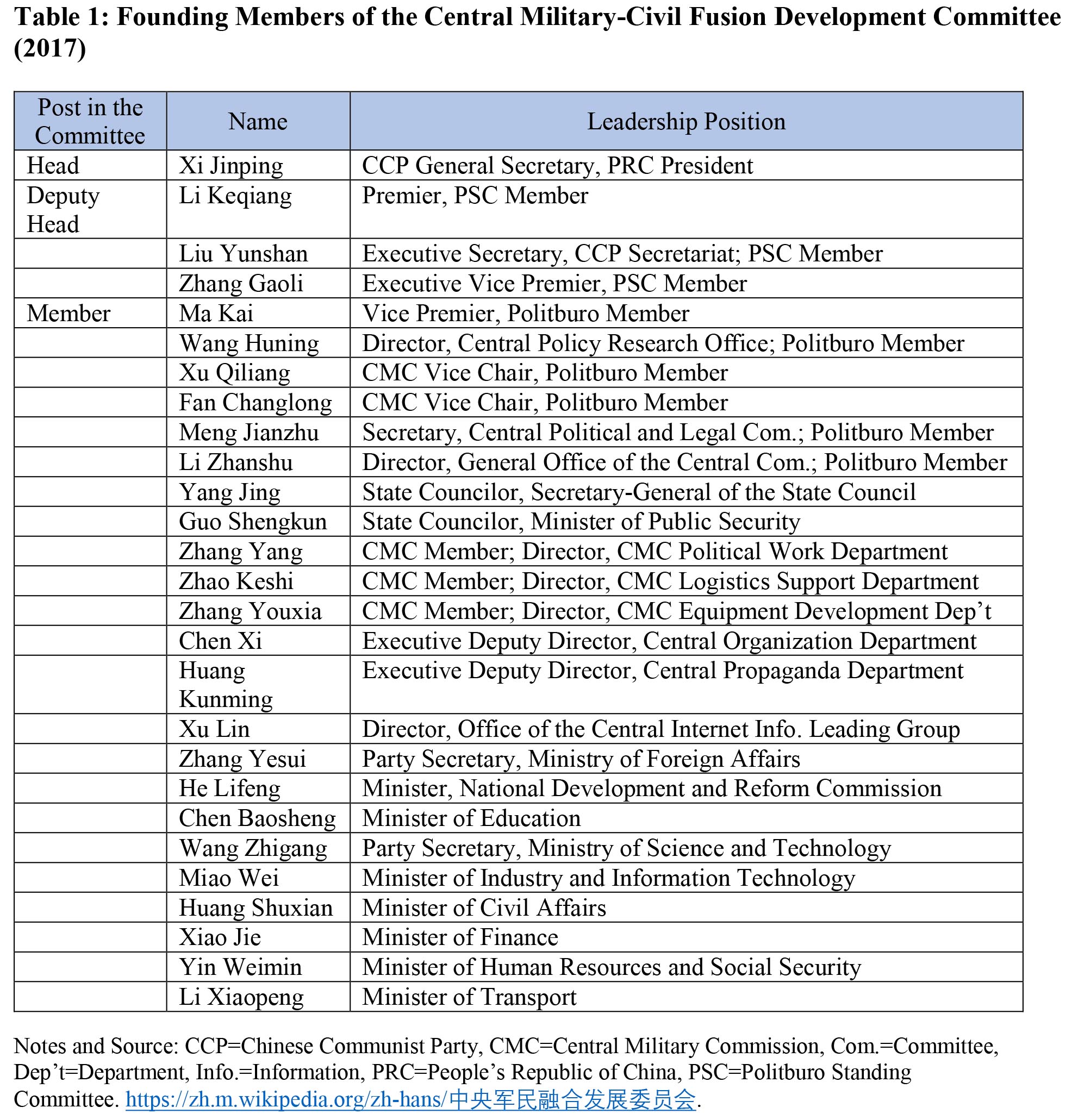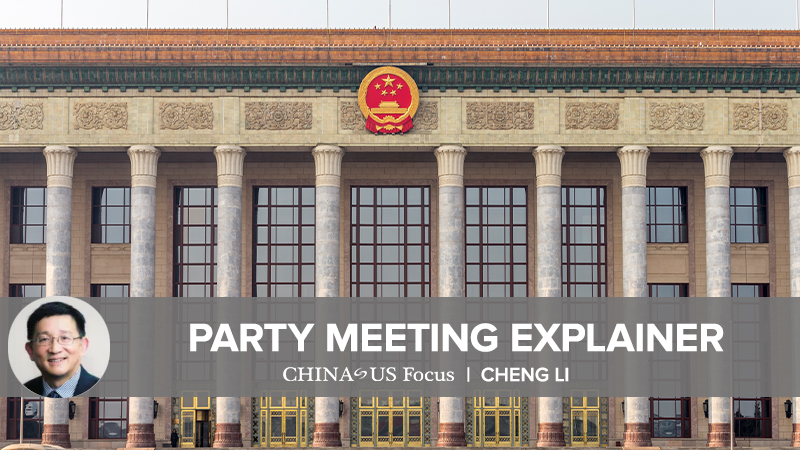The visit of the U.S. House Speaker Nancy Pelosi to Taipei and Beijing’s strong reaction to it—including its military drills—have raised the possibility of war over the Taiwan Strait to a new level. Foreign observers of the People’s Republic of China (PRC) can hardly overlook the drastic surge of ultra-nationalistic and anti-Washington sentiments among the Chinese public during this ongoing Taiwan Strait crisis. Understandably, foreign analysts have widely different assessments of the willingness of Chinese decision makers to go to war over Taiwan and how such a war would likely unfold.
In contrast to the Russia-Ukraine war, which has been largely a land war, the prospect of war over the Taiwan Strait will differ profoundly based on both its geographic nature and the strategic objectives of the forces involved. According to a November 2021 report on China’s military by the U.S. Department of Defense, in such a battle, the People’s Liberation Army (PLA) will vigorously challenge the United States in the domains of air, land, sea, digital networks, and space. More specifically, according to the same source, the PRC has commenced building at least three solid-fuel Intercontinental Ballistic Missile (ICBM) silo fields, which will cumulatively contain hundreds of new ICBMs.
The prior three articles in this series on Chinese technocratic elites with strong backgrounds in aerospace on the eve of the 20th Party Congress focused on two parallel rapid developments: 1) the advancements in China’s aviation and aerospace industries and 2) the growing prominence of rocket scientists in the Party leadership. Notably, most aviation technologies and space platforms can be dual-use, advancing both civilian and military tasks. Under the leadership of Xi Jinping, China has adopted a military–civil fusion (MCF, junmin ronghe) development strategy, which blurs the distinction between the military and civilian applications of many leading technologies, including big data, semiconductors, nuclear technology, aerospace technology, aircraft engines, shipbuilding, 5G, robotics, and artificial intelligence.
MCF is particularly prevalent in the aviation and aerospace sectors. Among China’s top 10 military-industrial complex conglomerates, eight are related to the aviation and aerospace sectors, and three of them––the China Aerospace Science and Technology Corporation (CASC), the China Aerospace Science and Industry Corporation (CASIC), and the Aviation Industry Corporation of China (AVIC)––are primarily focused on aviation and aerospace. A detailed analysis of the MCF development strategy will shed valuable light on both the implications of the rapid rise of the “cosmos club” in the Chinese leadership and PLA’s war preparation and strategic manipulation over Taiwan.
Military-civil fusion: The concept and background
The concept of military-civil fusion or military-civil integration is neither new for the PRC nor a uniquely Chinese practice. During the Mao era, the so-called Third Front development strategy (sanxian jianshe) in the mid-1960s involved massive military industrial construction in––and relocation to––the country’s interior regions, especially China’s northwest and southwest provinces. The Third Front movement was motivated by war preparations in the wake of the escalation of the Vietnam War and especially the rapid deterioration of Sino-Russia relations and the growing military tensions between the two Communist countries.
From the mid-1960s to 1980, China invested 205 billion yuan in the Third Front region, accounting for 39 percent of the total national investment in industrial development and infrastructure. In a far-reaching way, this strategic relocation profoundly industrialized and transformed part of China’s most undeveloped and agricultural region. In the 1980s, the Chinese government, however, shifted its emphasis to applying military industrial capacity and know-how from the Third Front to building the civilian economy.
As for the MCF experiences of foreign countries, many Chinese scholars often cite the 1994 report on Assessing the Potential for Civil-Military Integration: Technologies, Processes, and Practices by the U.S. Congress’s Office of Technology Assessment as the “masterpiece of the original concept of MCF.” The report called for combining the development of military industrial science and technology (S&T) with the larger civil S&T enterprises to form a unified national S&T industrial base. Such a base could better meet both military and civilian needs in advancing the supreme power of the United States on the world stage. In the words of Chinese analysts, “in order to ensure absolute military superiority in the 21st century, the United States emphasizes the use of high-tech explosions in the civilian economy to achieve leapfrog development of its national defense technology.”
There are, of course, important differences both between Third Front development in the Mao era and present-day MCF and between the Chinese practice of military-civil integration and the U.S. form of military-civil co-development. During the Third Front development of the 1960s and 1970s, there was simply an absence of a private economy in China. Now the dynamic private sector accounts for more than half of the Chinese economy and is well connected with international business and S&T communities. Xi Jinping’s “nationwide mobilization system” (juguo tizhi) has placed much more weight than China’s foreign competitors in allocating state resources––political, administrative, financial, and human––to promote targeted national projects, especially in the aviation and aerospace industries.
Xi’s strategic moves to advance military-civil fusion
Soon after becoming the top leader of the PRC in 2012, Xi Jinping drafted blueprints for the country’s goal of becoming a technological and scientific superpower by 2050. He has also developed synergies between the civilian and military sectors, especially in space exploration and the expansion of a rocket force, a top priority of his administration. In March 2013, at his meeting with the PLA delegation to the National People’s Congress, Xi called for drafting the “big article of MCF development.” One year later, at another meeting with the same group, Xi treated the MCF as “a national strategy.” In Xi’s words, “MCF is not only an act of rejuvenating the country but also a strategy for strengthening the army” (xingguo zhiju, qiangjun zhice). Ultimately, MCF is a strategy for China’s military modernization, which enables the PLA to prepare for, fight, and win high-tech wars.
In December 2015, as chair of the Central Military Commission (CMC), Xi Jinping announced the establishment of two new PLA forces: 1) the PLA Rocket Force, an upgrade of the previous Second Artillery Corps that transformed the strategic and nuclear missile troop to an independent service force, and 2) the PLA Strategic Support Force. These two newly named forces have the same rank as the PLA Navy, PLA Air Force, and PLA Army.
The following year, within the PLA Strategic Support Force, an important subdivision, the Space Systems Division (hangtian xitong bu), was founded to oversee the country’s key military space programs. As a report by the U.S.-based China Aerospace Studies Institute noted, this Chinese space military corps was founded almost exactly four years prior to the creation of the United States Space Force (USSF). In December 2019, President Donald Trump signed the National Defense Authorization Act (NDAA) for fiscal year 2020 and established the USSF, the sixth branch of the American armed forces.
The Central Military-Civil Fusion Development Committee
To better implement policies and coordinate between the commercial and military sectors, the CCP leadership established the Central Military-Civil Fusion Development Committee (CMCFDC) in January 2017. Xi Jinping served as the head of the committee while Premier Li Keqiang and two other Politburo Standing Committee (PSC) members, Liu Yunshan and Zhang Gaoli, served as deputy heads. Zhang also served concurrently as the office director of the committee. Additional 23 senior leaders in the Party, the State Council, and the PLA served as members of the committee. Table 1 presents these 27 founding members of the CMCFDC. Four out of the seven Politburo Standing Committee members, 10 out of 25 Politburo members, and five out of the 10 CMC members served on the committee. Several heads of the central Party organs and ministers of the State Council were also represented on the committee.

After the 19th Party Congress in fall 2017, Xi Jinping and Li Keqiang continued to serve as head and deputy head of the committee, respectively, but two new PSC members, Wang Huning and Han Zheng, replaced Liu and Zhang. Like his predecessor Zhang, Executive Vice Premier Han Zheng served concurrently as office director. The fact that these top Party-state leaders serve on this committee reflects the great importance and supreme convening power of this interagency leadership body.
Until several months ago, Jin Zhuanglong (1964), former chair of the Commercial Aircraft Corporation of China (COMAC) and former vice president of CASC, served as executive deputy office director of CMCFDC. Pei Jinjia (1963), former deputy director of the Taiwan Affairs Office of the State Council and long-time colleague of Xi Jinping during his years in Fujian, served as deputy office director of the committee. In the summer of 2022, Jin was appointed as Party secretary and minister of Industry and Information Technology, and Pei was promoted to Party secretary and minister of Veteran Affairs. Jin was an alternate member of the 17th and 18th Central Committee (CC) and a full member of the 19th CC, and Pei was an alternate member of the 19th CC. Both will most likely serve as full members of the CC at the upcoming 20th Party Congress. Jin may be promoted further in the years to come.
The application of civilian and private assets
One important objective of MCF is to draw upon civilian and private assets to improve the PLA’s capabilities. Since the 1990s, and especially during the past decade, the ability of China’s aviation and aerospace firms to access Chinese private capital and their cooperative agreements with foreign companies have had “a significant impact on their ability to acquire or develop new technologies and improve manufacturing capabilities,” as some American scholars have observed.
Meanwhile, the Chinese government has made concerted efforts to reduce barriers between commercial industry and the defense industrial base. The government has also set up numerous “innovation research centers” throughout the Chinese aviation and aerospace industries to propel spin-off and spin-on technologies to assist both commercial companies and the military, thereby bolstering the Chinese indigenous innovation system for dual-use technologies. To achieve this objective, the Chinese government has established many targeted state funds to finance private firms that have defense applications. According to some foreign sources, between 2016 and 2018, China created a capital fund (somewhere between US$55.6 billion to US$73 billion) to invest in private sector companies that develop technologies with potential military applications.
As a study by Alex Stone and Peter Wood has revealed, about 2 percent (3,000 of 150,000) of China’s private high-tech firms were involved in the defense industry and supply chain in 2019. Chinese media has reported that the number of private space-related companies in the country increased from 80 in 2016 to 141 in 2019. Meanwhile, some provincial and municipal governments also announced plans to promote military technology as an element of their regional economic development. In 2017, Hunan province, for example, set an ambitious growth target: an annual economic growth rate of 15 percent resulting from the use of military technology in civilian products.
The integration and parallel growth of the civil/private sector and military technological advancement is a central objective of MCF. Another goal––the recruitment of young talents, top-notch scientists, and technical experts in the civil/private sector, universities, and research institutions for PLA war preparation––is equally important from the perspective of the Party leadership. The following article will focus on the growing prominence of military members of the “cosmos club” in the decision-making circle in Beijing.

